FUNDING CUTS IMPACT CT HUMANITIES: Help CT Humanities navigate recent funding cuts and continue our vital work across Connecticut. All donations made to CTH will be matched dollar-for-dollar up to $50,000. Donate today!
Now Viewing:
The State
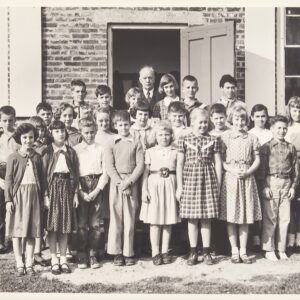
Lewis Sprague Mills and The Story of Connecticut
Lewis Sprague Mills wrote The Story of Connecticut for the state’s students, but today it can be considered a historical document itself.
Read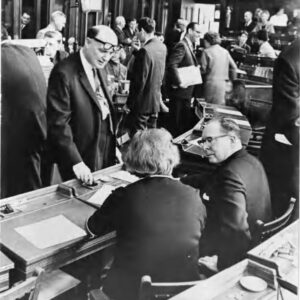
Connecticut’s Constitution of 1965
The Constitution of 1965 transformed Connecticut’s representation model by replacing equal town allotments with a system based on population.
Read
Marquis de Lafayette’s 1824 Tour of Connecticut
Almost five decades after the United States declared independence, Congress extended an official invitation to Marquis de Lafayette to tour the country as “The Nation’s Guest.”
Read
Connecticut State Seal and Arms
Connecticut has both an official state seal and state coat of arms that both include the state motto, “Qui Transtulit Sustinet.”
Read
Edward Hopkins: Connecticut’s 2nd Governor
Edward Hopkins (1600–1657) was an influential figure in the early history of the Connecticut Colony, serving multiple terms as colonial governor.
Read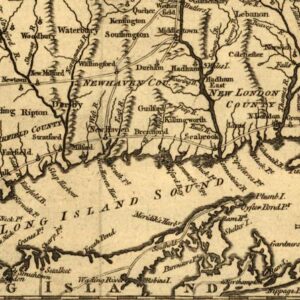
“Legalized Piracy”: Connecticut’s Revolutionary War Privateers
American colonists employed privateers as part of the military effort against the British during the American Revolution.
Read
Navigating Connecticut Safely: The Green Book’s Role in African American Travel
In the mid-20th century, during the era of Jim Crow, the Green Book helped African American travelers find safe restaurants, hotels, gas stations, and other businesses while on the road.
Read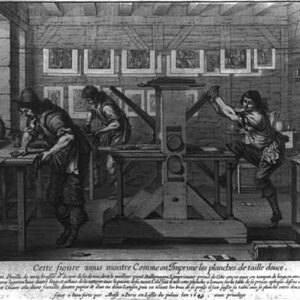
Thomas Short – Connecticut’s First Official Printer
Thomas Short became the Connecticut Colony’s first official printer in 1708, printing the laws and proclamations for the colonial legislature as well as the colony’s first book.
Read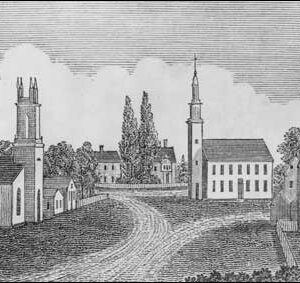
John Warner Barber’s Engravings Chronicle Connecticut History
John Warner Barber chronicled 19th-century Connecticut history through his historical writing and hundreds of engravings—many of which still exist today.
Read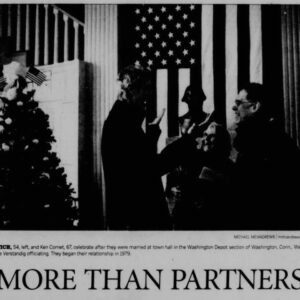
Connecticut Issues Same-Sex Marriage Licenses for the First Time – Today In History: November 12
On November 12, 2008, Connecticut issued its first marriage licenses for same-sex couples after Kerrigan et al. v. Commissioner of Public Health et al..
Read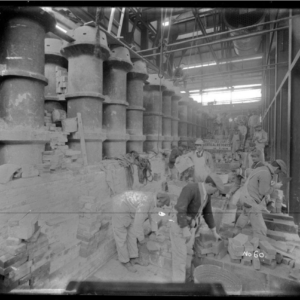
Early Connecticut Gas Light Companies
The first private gas light companies in Connecticut appeared just before 1850 in New Haven, Hartford, and Bridgeport.
Read
Army-Navy “E” Award Honors Connecticut for Support Against the Axis Powers
During WWII, the US military bestowed 175 Connecticut war plants with the Army-Navy “E” Award for outstanding production contributions to the army and navy.
Read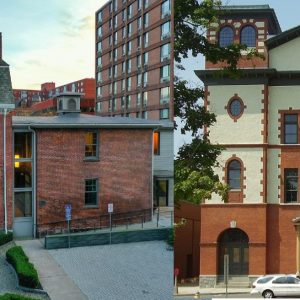
The Amos Bull House and Sterling Opera House: The First Connecticut Listings on the National Register of Historic Places – Who Knew?
The Amos Bull House in Hartford and the Sterling Opera House in Derby are tied for Connecticut’s first listing on the National Register of Historic Places.
Read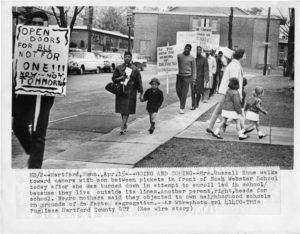
Black History Resources
Resources to learn more about Connecticut’s contributions to the narrative of Black history in America.
Read
Connecticut Turnpike Opens – Today in History: January 2
On January 2, 1958, Governor Abraham Ribicoff officially opened the Connecticut Turnpike—today the Governor John Davis Lodge Turnpike—to traffic.
Read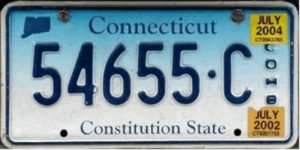
Creative License, or Fundamental Fact?
In 1973, the state legislature mandated that Connecticut’s license plates should display the state slogan “Constitution State.”
Read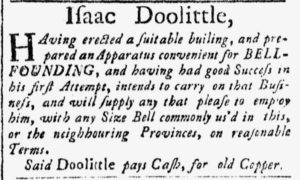
Early Church Bell Founders
Church bells served many important functions in early New England. Consequently, skilled bellfounders in Connecticut found themselves in high demand.
Read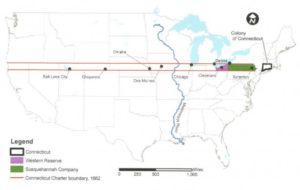
From the State Historian: The Map That Wasn’t a Map
The Charter of 1662 described Connecticut boundaries that extended all the way to the the Pacific Ocean!
Read
The Connecticut Poll Tax
The Connecticut poll tax lasted for almost 300 years and encompassed four different variants.
Read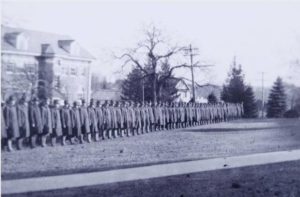
Connecticut Residents Did Not Let Veterans Day “Go Commercial.”
Despite passage of the federal Uniform Holiday Bill in 1968, Connecticut residents were largely reluctant to move Veterans Day observances from November 11.
Read
Eighteen Years in the Making: Connecticut’s 1991 Gay Rights Law
Connecticut’s 1991 “gay-rights law” was one of the state’s first LGBTQ+ civil rights laws and prohibited discrimination based on sexual orientation in housing, employment, and credit.
Read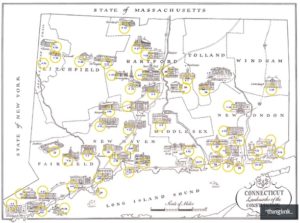
Map – Connecticut Landmarks of the Constitution
A map of some of the Connecticut Landmarks of the Constitution researched and published by the Connecticut Trust for Historic Preservation.
Read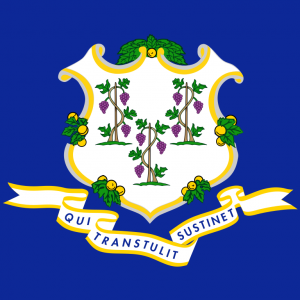
Connecticut’s Official State Flag – Who Knew?
While Connecticut used variations of flags for state functions, the legislature did not adopt an official state flag until 1897.
Read
Early Turnpikes Provided Solution to Lack of Reliable Roads
Although few of the privately managed toll-roads of the 1800s proved profitable for investors, state commerce benefited in the long run.
Read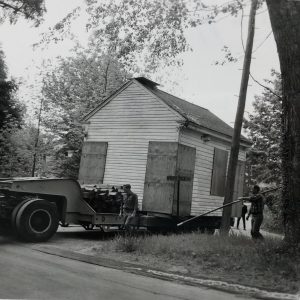
The Connecticut Houses that Ended Up in Massachusetts
Old Sturbridge Village moved numerous historical CT buildings, but evidence of their existence still lives on in historic maps, photographs, and memories.
Read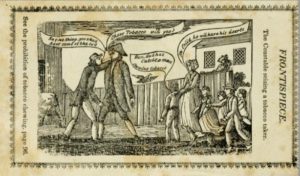
The Long, Ambiguous History of Connecticut’s Blue Laws
Connecticut’s blue laws are a series of laws based on puritan values that restrict or ban certain “morally questionable” activities on days of worship or rest.
Read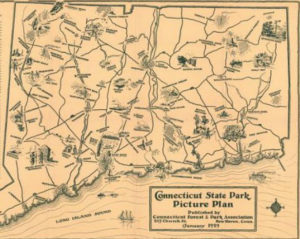
Preserving Connecticut’s Natural Beauty: Connecticut’s First State Parks
Sherwood Island, Mount Tom, Macedonia Brook, and Kent Falls are among the earliest lands set aside as the parks movement took hold in the state.
Read
The Charter of 1662
The Connecticut Charter, which provided the basis for Connecticut government until 1818, was secured because of Connecticut’s realization after the restoration of Charles II to the English throne in 1660 that the government of the colony lacked any legal foundation.
Read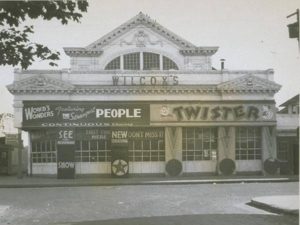
Connecticut’s Youngest City – Who Knew?
The city of West Haven, incorporated in 1961, is Connecticut’s youngest city but one of the state’s oldest settlements.
Read
Connecticut’s First Known Juneteenth Celebration in Norwich – Who Knew?
In 1989, the Norwich Branch of the NAACP organized the first official Juneteenth celebration in Connecticut—several other towns followed suit in subsequent years and decades.
Read
Andover to Woodstock: How Connecticut Ended Up with 169 Towns
Religious mandates, the difficulties of colonial-era travel, and industrialization are a few of the forces that gave rise to the proliferation of towns in our state.
Read
Mad about Shad: Connecticut’s Love Affair with an Oily Fish
Some Connecticut River towns continue to hold an annual shad festival, replete with a “Shad Queen” and a feast known as a “shad planking.”
Read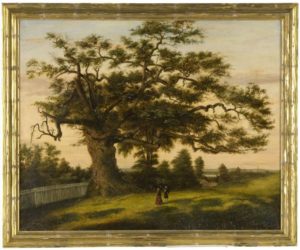
The Unsteady Meaning of “The Land of Steady Habits”
Connecticut’s description as “the land of steady habits” has been used to stand for a wide list of subjects, from beer drinking to sushi to hair bobbing.
Read
The Complicated Realities of Connecticut and the Civil War
The history of the Civil War surrounds Connecticut residents both in terms of its physical realities and in the lasting legacies of a complicated conflict.
Read
The Revolution of 1817
The Connecticut gubernatorial election of 1817 transferred power from the Federalists to the Republican Party, ending the Congregational Church’s domination.
Read
The First University of Connecticut Trustees
When the University of Connecticut started life as the Storrs Agricultural School in 1881, Governor Hobart Bigelow appointed its first eight trustees—all with agricultural backgrounds.
Read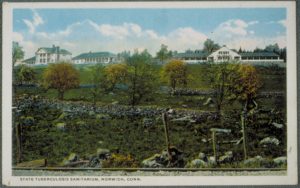
The White Plague: Progressive-Era Tuberculosis Treatments in Connecticut
Treatments for tuberculosis included everything from exposure to extremes in temperature to regimens involving access to the outdoors.
Read
The Storied History behind Connecticut’s Nicknames
Though Connecticut’s official nickname is the “Constitution State,” it has been known by many names throughout the centuries.
Read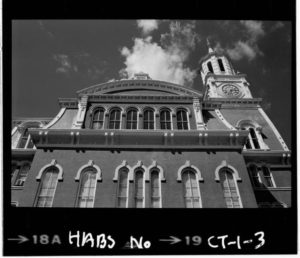
Site Lines: Monuments to Connecticut’s Lost County Government
County government operated in Connecticut in one form or another for nearly 300 years before the state abolished it in 1960.
Read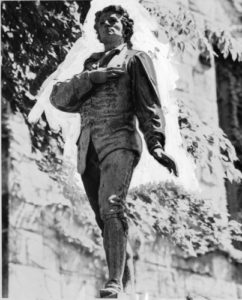
Nathan Hale Hanged in New York – Today in History: September 22
On September 22, 1776, the British hanged Revolutionary War soldier Nathan Hale, a school teacher from Coventry, Connecticut, for spying.
Read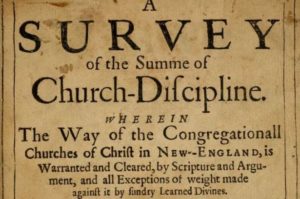
Thomas Hooker: Connecticut’s Founding Father
A powerful and popular preacher, Thomas Hooker led a group of Puritans out of Massachusetts in 1636 to settle new lands that eventually became the city of Hartford.
Read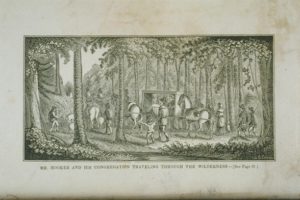
The Importance of Being Puritan: Church and State in Colonial Connecticut
Connecticut Protestants wanted to cleanse the church of what they saw as corruption, and to return to the simplicity and purity of early Christian worship.
Read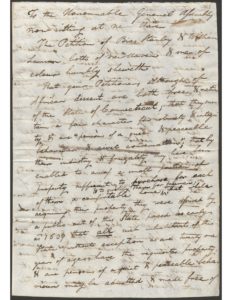
“’No Taxation without Representation’: Black Voting in Connecticut
In 1870, Connecticut ratified the 15th Amendment, but poll taxes, grandfather clauses, and other means of disenfranchising African Americans remained in place.
Read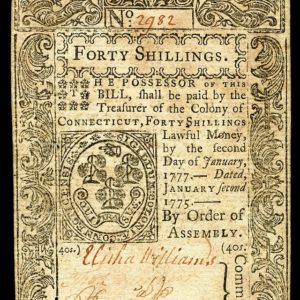
Connecticut’s Early Commercial Banks
After observing the financial success of commercial banks in Boston and New York City, wealthy elites in Connecticut pressured the Connecticut General Assembly to grant charters for privately owned commercial banks in Hartford, New Haven, and New London in 1792.
Read
Hope on the Wall: Connecticut’s New Deal Post Office Murals
Between 1934 and 1943, the federal government placed murals in twenty-three Connecticut post offices.
Read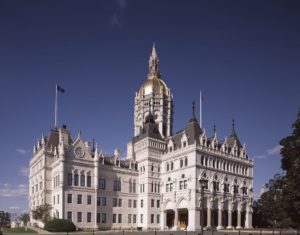
The State Cantata – Today in History: June 3
On June 3, 2003, the Connecticut General Assembly designated The Nutmeg, Homeland of Liberty by Dr. Stanley L. Ralph as the State Cantata.
Read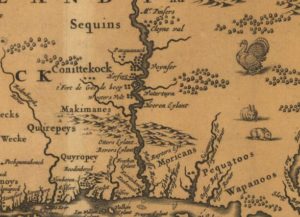
Timeline: Settlement of the Colony of Connecticut
A timeline displaying the major events leading to Connecticut statehood, including its settlement by the Dutch, the origins of Hartford, Wethersfield, and Windsor, the founding of the Connecticut, New Haven, and Saybrook colonies, and Connecticut’s acquisition of a formal charter from England.
Read
Connecticut’s Loyal Subjects: Toryism and the American Revolution
Loyalists in Connecticut, often acting on beliefs tied to relegion, proved particularly prominent in Fairfield County. Many of them fled to Canada rather than face imprisonment at New-Gate.
Read
Gun Wheel of the First Light Battery, Connecticut Volunteers
A wheel damaged in battle now resides at the Connecticut State Capitol to commemorate the Civil War service of the First Light Battery Connecticut Volunteers.
Read
The Hartford Whalers: Connecticut’s Last Major League Sports Franchise
Major league hockey debuted in Hartford in 1975 and the Hartford Whalers remained a staple of the Connecticut landscape for twenty-three years.
Read
Connecticut and the Embargo Act of 1807
The Embargo Act of 1807 stifled Connecticut trade with Europe, but ultimately boosted local manufacturing.
Read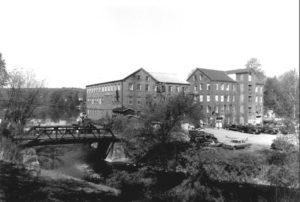
Buckling Up For Auto Safety
Connecticut joined several other states and the District of Columbia mandating seat belt usage for children and adults in automobiles in 1985.
Read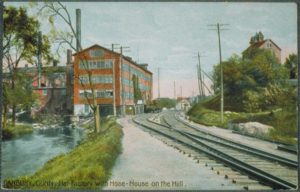
Rivers of Outrage
Pollution of Connecticut’s waters by industrial waste and sewage in the decades after the Civil War was arguably the state’s first modern environmental crisis.
Read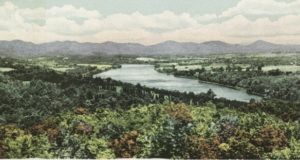
The Connecticut Valley Authority That Never Was
In the early 20th century, supporters of the New Deal tried to recreate the Tennessee Valley Authority in the Connecticut River Valley.
Read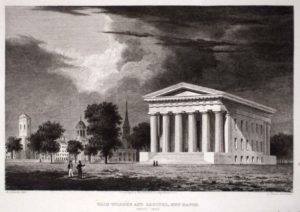
Hartford and New Haven: A Tale of Two Capitals
Before the expense of having two capital cities became too great, both Hartford and New Haven served that function. Hartford became the sole capital in 1875.
Read
The 42-Day Income Tax
In 1971, to eliminate the state’s budget deficit, Connecticut legislators approved a tax on income. Just forty-two days later, they repealed it, instead voting to increase the state’s sales tax.
Read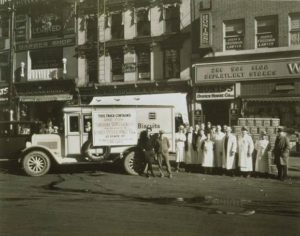
Oystering in Connecticut, from Colonial Times to the 21st Century
Why tasty Crassostrea virginica deserves its honored title as state shellfish.
Read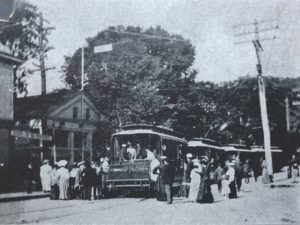
Trolley Campaigners Storm Small Towns and Votes for Women is the Battle Cry
In the wake of a 1912 trolley campaign, the woman’s suffrage movement rapidly gained ground across Connecticut.
Read
Cornerstone Set – Today in History: May 25
On May 25, 1909, the cornerstone was laid for the new State Library and Supreme Court building in Hartford.
Read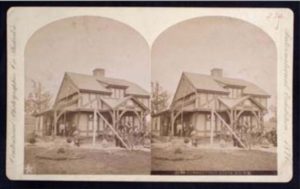
Take Me to the Fair: Connecticut Exhibits at the International Expositions
Connecticut took part in many of the great World’s Fairs, especially those held in North America.
Read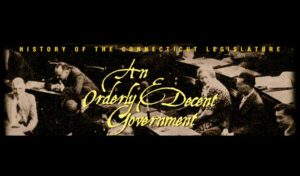
An Orderly and Decent Government
An Orderly and Decent Government is an exhibition on the history of representative government in Connecticut developed by the CT Humanities in April 2000.
Read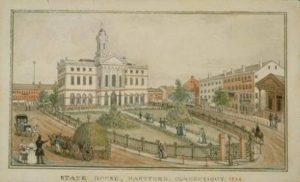
Where It All Happened: Connecticut’s Old State House
Connecticut’s Old State House is a memorial to many of the legislative advances made in Connecticut during the most formative years of the United States.
Read
An Orderly & Decent Government: A New State, A New Constitution, 1776-1818
The American Revolution prompted enormous political and social changes in other states, but Connecticut remained a “land of steady habits” until 1817 brought change to state government.
Read
An Orderly & Decent Government: A Society in Ferment, 1819-1865
Industry, immigration, and urbanization characterized Connecticut in the 19th century.
Read
An Orderly & Decent Government: Making Self-Government Work, 1888-1905
Connecticut’s ancient system of town-based representation ensured the continuation of small town values and perspectives.
Read
An Orderly & Decent Government: Establishing Self Government, 1634-1776
Puritans from Massachusetts settled early Connecticut towns, and in 1639 drew up “The Fundamental Orders” by which they would be governed.
Read
An Orderly & Decent Government: Making Self-Government Work, 1634-1776
In 1698 the General Court reorganized itself to deal more effectively with Connecticut’s complex new problems.
Read
An Orderly & Decent Government: Significant Events & Developments, 1634-1776
After the Pequot War, New settlers and speculators sought to establish new towns from the colony’s undistributed lands.
Read
An Orderly & Decent Government: Searching for the Common Good, 1819-1865
During the early 19th century, the General Assembly was slow to deal with rising crime, poverty and the other social costs of a rapidly changing society.
Read
An Orderly & Decent Government: Searching for the Common Good, 1888-1905
Stimulated by immigration and industrialization, Connecticut cities expanded rapidly
Read
An Orderly & Decent Government: Significant Events & Developments, 1888-1905
Connecticut saw its population of immigrants from southern and eastern Europe swell in the last decades of the 19th century.
Read
An Orderly & Decent Government: A Clash of Cultures, 1888-1905
In the last decades of the 19th century, Connecticut was transformed by a massive flood of immigrants fleeing political and economic instability.
Read
An Orderly & Decent Government: Making Self-Government Work, 1929-1964
Connecticut attempted to reorganize it state government by streamlining its agencies and rejected a number of socially progressive programs.
Read
An Orderly & Decent Government: Significant Events & Developments, 1905-1929
Early 20th century life in Connecticut was marked by the election of 1912, US entry into World War I, and the Great Depression.
Read
An Orderly & Decent Government: Searching for the Common Good, 1776-1818
During the American Revolution, loyalists were common in Connecticut. Those sympathetic to the patriot cause helped provide for the Continental army.
Read
An Orderly & Decent Government: Making Self-Government Work, 1905-1929
With war’s end, suffrage advocates stepped up their campaign for equal rights.
Read
An Orderly & Decent Government: Searching for the Common Good, 1929-1964
Organized labor grew strong during wartime while discriminatory practices in housing and education persisted throughout the state.
Read
An Orderly & Decent Government: Making Self-Government Work, 1866-1887
The late 1800s witnessed significant challenges to Connecticut’s voting and taxation laws.
Read
An Orderly & Decent Government: Significant Events & Developments, 1929-1964
The era of Wilbur Cross and the Great Depression transitioned into World War II and state control by Democrat mastermind John Bailey.
Read
An Orderly & Decent Government: Significant Events & Developments, 1965-Now
Connecticut recast its constitution, reapportioned its House and Senate, and struggled with providing equal rights to all races and socio-economic classes in the state.
Read
An Orderly & Decent Government: A Co-Equal Branch of Government, 1965-Now
Connecticut replaced town-based representation with legislative districts while the state struggled to supply equal opportunities across race and class lines.
Read
An Orderly & Decent Government: Searching for the Common Good, 1866-1887
In 1873, the legislature began to look more closely at the problems of Connecticut’s workers.
Read
An Orderly & Decent Government: Making Self-Government Work, 1965-Now
The 1965 state constitution helped redistribute populations more evenly into districts. It was also a period of new representation for women and African Americans in the state government.
Read
An Orderly & Decent Government: Crisis and Recovery, 1929-1964
World War II helped bring an end to the Great Depression in Connecticut. Following the war, the growth of the suburbs redefined life in the state.
Read
An Orderly & Decent Government: Searching for the Common Good, 1965-Now
The state generated revenue for urban renewal and social programs through gaming and income tax initiatives.
Read
An Orderly & Decent Government: The Rise of the Factory, 1866-1887
In the years following the Civil War, Connecticut’s transformation to an urban, industrial state intensified.
Read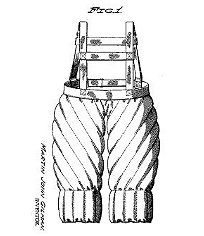
Connecticut Patents
From the time the federal government first began issuing patents in 1790, Connecticut was a national leader in patenting its abundant innovations.
Read
A Tale of Shad, the State Fish
The aquatic inhabitant, shad, has a long history of influencing foodways, income, and culture in the region.
Read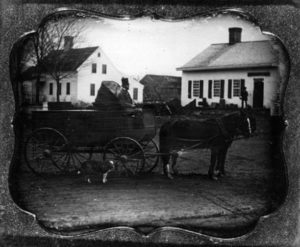
Yankee Peddlers
Yankee peddlers were a common sight in the Connecticut countryside in the mid-19th century.
Read
Connecticut State Capitol
Still in use today, the State Capitol continues to be a crucial site of lawmaking, state business, protest, advocacy, and more.
Read
Connecticut’s Oldest English Settlement
The original Windsor settlement contained not only the town of Windsor but also what eventually became the towns of Enfield, Suffield, Simsbury, and others.
ReadMore Articles




